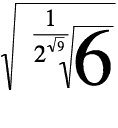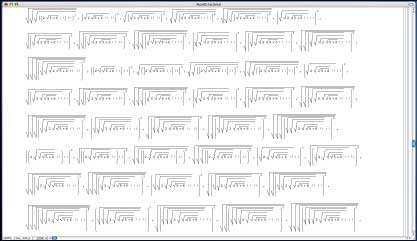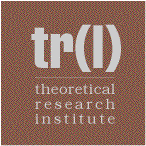|
Narcissistic numbers are numbers that are 'in love with themselves'. Madachy (1966) defines them as numbers that "are representable, in some way, by mathematically manipulating the digits of the numbers themselves".
This article defines a new class of narcissistic number, namely:
- Defn: A pretty wild narcissistic number is:
- ... an integer n that can be expressed using just the digits of n (each digit used once only and in order from left to right) and the operators + – × ÷ ^ √ !
Such numbers are said to pwn (pronounced: own). I allow for non-trivial concatenation of digits (e.g. 360 = 3! × 60), though such cases are quite rare.
- Examples
- 456 = 4 (5! - 6) 1296 =
 1944 = 1944 = ![Sqrt[9]](images/1944small.gif)
Section B compares pretty wild narcissistic numbers to related classes of narcissistic numbers. Section C considers the special case where the factorial is not required, but the radical is required for a solution. I call such numbers: radical narcissistic numbers, and they are particularly rare and juicy. Section D provides what I believe is the first comprehensive derivation of the 2-digit, 3-digit and 4-digit numbers that pwn, and which is also hopefully complete. Section E discusses the algorithmic derivation of these tables using Mathematica. Computationally, solving this problem is a rather onerous combinatoric feast – for example, just to test the number 1944 above involves generating and checking about 100 million different combinations of the integers that constitute that 4-digit number.
Background
'Nice' Friedman numbers
If one restricts the allowable set of operators to {+ – × ÷ ^}, that is without √ or !, then the number of different ways that one can combine the digits of any integer n is finite ... and also relatively easy to enumerate.
There are only 14 such integers that exist for positive n < 10000, and they are known as the 'nice' Friedman numbers (see Sloane A080035), namely:
| 127 = -1 + 27 | | 343 = (3 + 4)3 | | 736 = 7 + 36 | | 1285 = (1 + 28)5 |
| 2187 = (2 + 18)7 | | 2502 = 2 + 502 | | 2592 = 25 92 | | 2737 = (2 × 7)3 - 7 |
| 3125 = (31 + 2)5 | | 3685 = (36 + 8)5 | | 3864 = 3(-8 + 64) | | 3972 = 3 + (9 × 7)2 |
| 4096 = 40/9 + 6 | | 6455 = (64 - 5)5 | | |
The 4-digit Friedman numbers were solved by Mike Reid, Ulrich Schimke, and Philippe Fondanaiche; Erich Friedman has solved for 5-digits and provides summary tables.
Wild Narcissistic Numbers
Mike Keith suggests expanding the set of allowable operators from {+ – × ÷ ^} to anything i.e. allowing operators such as Catalan numbers, Fibonacci numbers etc.
He calls such beasts wild narcissistic numbers.
Less is more
It is often the case that unlimited freedom - anything goes - is not as interesting as the freedoms that are expressed or sought within a given structural form. For instance, most music systems are defined around a small number of discrete frequencies; Western music is generally constrained to just 12 semi-tones rather than an infinite range of possible frequencies. In similar vein, the numbers considered here are not manifestly wild, but are qualified by being pretty wild, or perhaps pretty and wild. I am not sure that they necessarily have 'meaning' – who is to say what has meaning anymore – but they do have a certain je ne sais quoi – mystery, beauty and elegance. Arguably, that elegance dissipates as the number of allowable operators is increased.
√ and ! ... from finite to infinite
If radicals and/or factorials are added to the set of operators, then the number of ways one can combine the digits of an integer changes from being a finite combinatorical problem to an infinite one. This is because one can repeatedly nest the √ and ! operators to any arbitrary depth (for example, 3!!!!!!!). The fact that doing so may not be helpful is an entirely separate matter.
In order to conduct a search with radicals and factorials, it follows that one has to impose a maximum depth for nesting. In the computations performed here, the radical operator is nested 3 times on every possible way that two or more digits (or legitimate variations of those digits) can be combined. The factorial operator is then nested up to twice on every one of these combinations. The following diagram gives a flavour of this process ...

Click to zoom
While it is, of course, conceivable that a solution exists that requires a higher degree of nesting, the probability that such an example does in fact exist for 4-digit numbers would appear to be remote.
- References (non-web)
- Madachy, J. S. (1966), Mathematics on Vacation, Thomas Nelson & Sons — p.163 to 175
|


 1944 =
1944 =